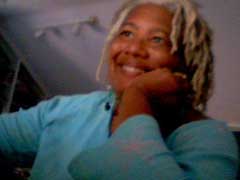A Look at Love & Marriage in the 21st Century
Ah yes, another Valentine’s Day is upon us. Happy couples are out in full bloom, holding hands, winking at each other, taking over the restaurants. Love affects all of us, if we’re lucky, but what exactly is it?
It is defined through real stories of romance and serendipity—love at first sight; high school sweethearts who went separate ways and ended up back together after years apart; longtime friends turned lovers.
It is seen in poems that date back as far as 76th century B.C.: “To me he seems like a god/as he sits facing you and/hears you near as you speak/softly and laugh/in a sweet echo that jolts/the heart in my ribs.”
It is ingrained in pop culture: Desperate Housewives, Lipstick Jungle, eHarmony, match.com and, of course, Lifetime Television and Delilah.
Scientists explain love as the release of oxytocin and vasopressin in the brain (and some are even working on “anti-love” drugs that suppress those hormones to fend off distractive infatuations).
Love is all of this, yet in the 21st century, love does not necessarily equal matrimony. American marriage rates are declining; cohabitation and divorce rates are up. The nation’s strongest institution is in a state of flux.
The Numbers
The number of unmarried couples living together increased 72 percent between 1990 and 2000, and the number of unmarried couples living together increased tenfold between 1960 and 2000, according to the most recent U.S. Census Bureau study. One study shows that more than 50 percent of American adults are unmarried. People are waiting longer to get married; the average age is 27 for men and 25 for women. But in the 50s, men were getting married at 22 and women at 20. Divorce rates for 2008 vary from study to study, but range from 40 to 60 percent.
Dr. Lynn Mulkey, Sociology department chair at USCB and author of Revisiting Ruben Hill’s Theory of Familial Response to Stressors, said these numbers do not always reveal the whole picture. “There is so much that creates the statistic,” she said noting that learned social norms, urbanization and technology are just a few elements of the larger context. “[Marriage] is not a personal choice anymore. The sociology of it is that individuals don’t choose world preferences, tolerances … they are formed by influence.”
She added that our economy’s voracious appetite requires that both men and women work, and that has changed traditional roles – woman as nurturer, man as provider – to more androgynous roles. “It is because women play a different part in the economy.”
The Marriage Debate
Pro-marriage advocate and former single mother Maggie Gallagher, President of the Institute for Marriage and Public Policy and a co-author of The Case for Marriage, is one expert who is concerned with the shift, and she is working to keep traditional marriage intact. She recently lectured at USCB and spoke about its financial, social and emotional benefits.
“Marriage as a universal social institution is grounded in certain universal features of human nature. When men and women have sex, they make babies. Reproduction may be optional for individuals, but it is not optional for societies. Societies that fail to have “enough” babies fail to survive. And babies are most likely to grow to functioning adulthood when they have the care and attention of both their mother and their father.”
However, Mulkey has a different perspective. “A highly paid professional woman is adequate to provide the child’s needs … a child needs a mother.”
Rebecca Stetoff, author of Open for Debate: Marriage, said “Critics for the marriage movement worry that pro-marriage researchers such as [Waite and] Gallagher are trying to turn back the clock to a time when ‘traditional’ marriage was the social norm and other living arrangements, such as cohabitation and single parenthood, were stigmatized.”
Gay marriage, now legal in Connecticut and Massachusetts, is the subject of heated arguments. Same Sex marriage was first legalized in Multnomah County (Portland) Oregon in 2004, but the state later annulled all three thousand of them because of public outcry.
“…the biggest, most obvious and intractable difference between same-sex and opposite-sex unions [is that] only the latter are capable of producing children and uniting the child with his own mother and father,” said Gallagher. She also added “Gay marriage is not primarily about marriage … It is about inserting into the law the principle … that sexual orientation should be treated exactly the same way we treat race in law and culture … The next step will be to use the law to stigmatize, marginalize, and repress those who disagree with the government’s new views on marriage and sexual orientation.”
Regardless of the political controversies, some researchers found marriage is linked to health. The U.S. Department of Health and Human Services said in 2003, “Hundreds of quantitative studies covering different time periods and different countries” connected marriage to better health. One study even correlated marriage to high blood pressure and concluded that the quality of the marriage is critical, not just the fact that someone is married. “Men’s health is better when they are married. Women’s health is better if they’re happily married or if they’re alone,” said Dr. Marty Sullivan of Duke University Medical Center.
The government does what it can to keep traditional marriages intact. Since 2006, over $100 million of federal funds have been allocated annually to the pro-marriage/anti-divorce Healthy Marriage Initiative (HMI). The program educates Americans on the benefits of a healthy marriage, and provides couples with conflict resolution and communication tips, as well as anger management tips. HMI hired thousands of therapists to provide marriage counseling, however, women’s rights activists argue the program could perpetuate abusive relationships and lessen funding for low-income single mothers.
Three states are trying to save traditional marriages by offering Covenant marriages, which require couples to receive counseling before and during a marriage. Divorce is only possible after counseling and a two-year separation. Yet it hardly made waves in Arkansas when it was legalized in 2005, with a mere 67 out of 37,942 opting for it. And only three percent of couples in Louisiana have opted into it.
“I think marriage has a natural basis,” said Gallagher. “It reoccurs over and over again in diverse human societies. But at the same time marriage is not natural to the individual—it requires considerable cultural energy to create and sustain as an institution.”
So what is the fate of marriage? Will every American of every sexual orientation find their soul mate and live happily ever after with government benefits? Will divorce rates decline? Will scientists one day be able to create Cupid himself? Who is to tell. Either way, it certainly makes for some good conversation with your date this Valentine’s day.








